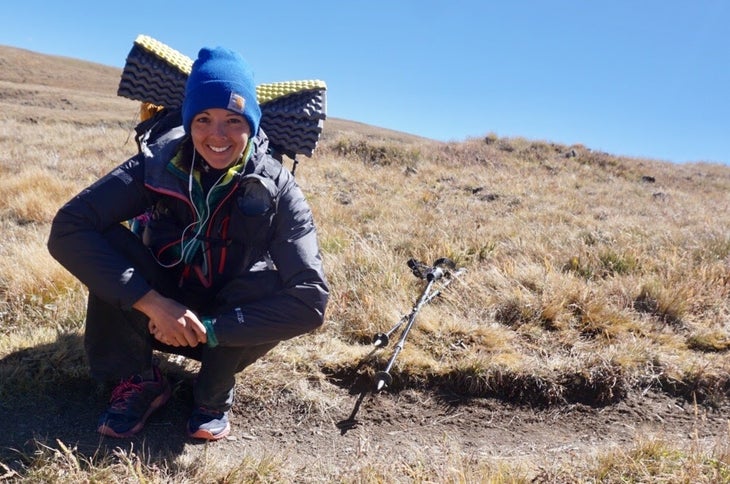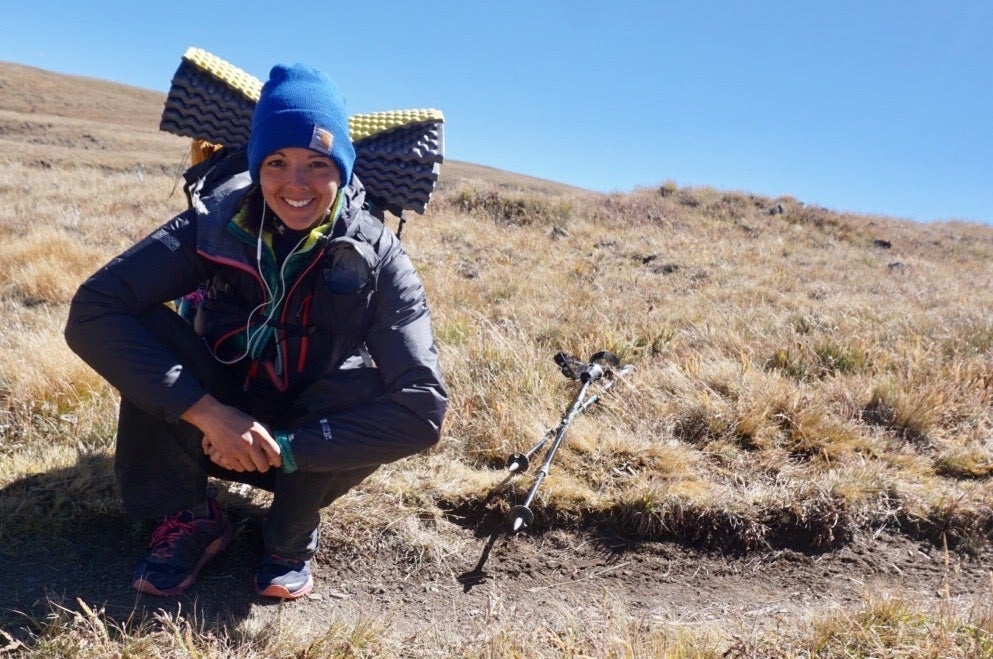After thru-hiking the Appalachian Trail, I thought the would be a breeze. I could hike it in a month instead of four and a half; itÔÇÖd be way less committing, allowing me to stretch my legs without causing complete upheaval in my off-trail life. Sure, the elevations would be higher, and conditions could be more extreme as a result, but I felt confident enough in the skills IÔÇÖd acquired on my previous hike to begin at the end of AugustÔÇöa late start for the Colorado Trail. Despite my confidence, there were a few surprising discoveries I made along the way.
Water Sources Can Be Gross and Unreliable
After where water is plentiful and often pristine, I was shocked at the quality of ColoradoÔÇÖs water sources. Within the first few days of my hike, I encountered a raging river that smelled like cow excrement and a muck puddle that doubled as a water source if you were lucky enough to find it. IÔÇÖd packed a filter, but even after using it on those questionable sources, the water often had an unappealing color and flavor. As I hiked further south, conditions only became more dire. It was late in the season, which meant that some sources that were previously fueled by snowmelt were suddenly dry, so there were a few sections of trail where I had to investigate two or three potential sources before actually finding water. While I never ended up in a precarious situation, my unfamiliarity with western water sources resulted in a few thirsty miles.
Pro tip: Starting earlier in the season makes it much more likely that water sources will still be running. Just keep in mind that the earlier you hike, the more likely you are to run into snow at high elevations.
Bear Hangs Are Nearly Impossible
On my first thru-hike, I got used to bear bagging. A proper bear hang for your food should be the ground, 5 feet away from the trunk of a tree, and 5 feet away from the branch on which it hangs. In places with large deciduous trees like the AT, this is a relatively feasible challenge, but in Colorado where the majority of trees are pines, itÔÇÖs near-impossible. As a result, you either have to get really creative with your bear hang (which takes a lot of time and effort), or you need to use a different system to protect the local wildlife. I settled for a rodent hang, placing my food far away from my campsite and a few feet off the ground to keep wildlife away from my tent, but it was less than ideal.
I ran into a lot of hikers on the CT who chose to hike without bear-resistant food storage since theyÔÇÖre not legally required, but the idea of sleeping with my food made my skin crawl. Some hikers carried puncture-proof sacks like the Ursack AllMitey paired with odor-proof Opsaks. The ultra-rare hiker , but these were few and far between due to their weight. If I were to hike the CT again, IÔÇÖd carry an Ursack for peace of mind.
Afternoon Storms Are Common in the Alpine
When I made it to Twin Lakes, two weeks into my thru-hike, I had the option to hang a right and hike above treeline for a few days or dip down into a valley. I already knew which way I was going to travel. The west offered stunning vistas, solitude, and 360-degree views in spots, and I knew I couldnÔÇÖt pass up the opportunity to see them. But on my first afternoon above the treeline, I looked up and realized that lightning was flashing all around me, and I was pretty much the highest object around. After my heart stopped in my chest, I scrambled down the side of the peak and found cover amidst a grove of trees. The storm eventually passed. I didnÔÇÖt get burned to a crisp, but I had a newfound appreciation for lightning while hiking above 10,000 feet.

Mail Drops Are Irreplaceable in the South
Towns like Breckenridge and Salida make it easy to resupply without issue on the northern section of the trail. However, as you travel south, as most hikers do, the food options become more and more sparse. South of Salida, hikers should expect limited convenience-store-like food options which usually come with a hefty price tag. Fortunately, in towns like Lake City where hikers might post up for the night at a hostel, mail resupplies are simple and straightforward. Some hostels and stores even hold packages for the whole season, making it easy to time their arrival with your crossing. So, you could theoretically mail them to yourself before you even start the trail. I researched local hostels and stores that would hold mail for me before I left. Then, I mailed myself a weekly drop before leaving for the trail. Unfortunately, I found that mail drops were unnecessary for the first two weeks. This meant that instead of eating whatever I wanted in town, I had to stick to my previously chosen meals. But late into the trail, I was really grateful to have my mail drops because food options had become scant.
ItÔÇÖs Not the Rain That Will Wreck YouÔÇöItÔÇÖs Hail
Before beginning the Colorado Trail, I worried about late-season monsoons. I knew Colorado was famous for its arid climate, and that my gear would dry out quickly if it got soaked, but the thought of torrential rains kept me up at night. It was just a matter of time before I got caught in a storm, but it was actually the hailÔÇönot the rainÔÇöthat was most catastrophic. On one stretch of trail, marble-sized pieces of ice rained down on me for about an hour. I found shelter beneath a sturdy pine tree, but days afterwards, I ran into a group of hikers who said that the hail had shredded their tents, and they had to find the nearest road crossing to hitch into town once the weather passed. I found that the best way to approach hail was to keep myself updated with the latest weather reports and try to keep myself at lower elevations when inclement weather was expected. In cases where I couldnÔÇÖt predict the forecast, I took shelter as soon as conditions became unfavorable.


